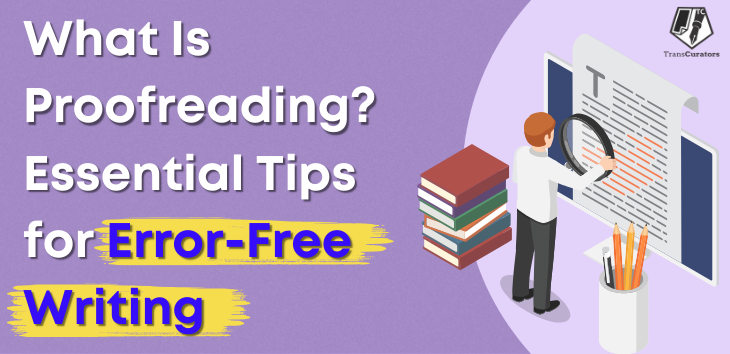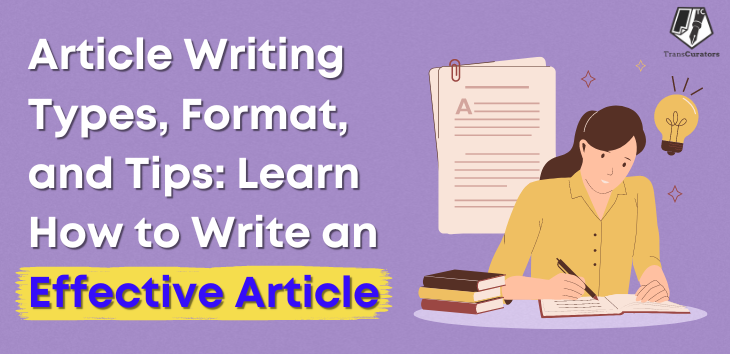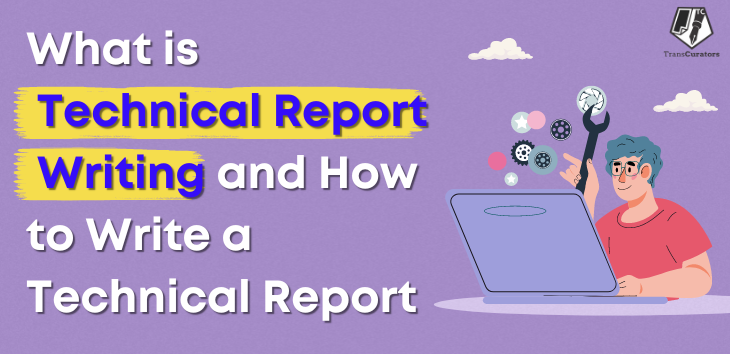
Proofreading is the final polish of the masterpiece of your writing. Imagine you’ve written an engaging narrative, an informative essay, or a critical report. However, little flaws exist in the text, ready to ravage your credibility. Proofreading is a mindful method that identifies these errors and guarantees your words are clear and professional. It’s the critical step that elevates decent writing to excellent writing, catching and maintaining your reader’s attention with flawless execution. Dive into the depths of proofreading and witness how careful attention to detail can take your content to new heights.
What is Proofreading?
Proofreading is an essential step in writing that assures your work is correct, readable, and professional. It is the final step of the creation process, where you carefully review a text to correct any grammar, spelling, punctuation, and formatting errors. Proofreading ensures that the document is polished and ready for publishing or submission. Unlike editing, which aims to improve the overall quality of writing by improving clarity, coherence, and organisation, proofreading focuses on little errors that might affect the professionalism of your work.
Proofreading vs. Editing
While proofreading and editing have a close relation, they serve distinct functions. Editing upgrades the overall quality of the writing. It includes improving the structure, increasing clarity, and ensuring the information is consistent and logically organised. Editing involves making significant changes to the text, such as rewriting sentences, rearranging paragraphs, and adding or eliminating information.
On the other hand, proofreading is the last step in the editing process to identify surface-level problems. It makes no significant changes to the content but guarantees that the text is free of spelling, grammatical, punctuation, and formatting errors. Both editing and proofreading are essential in the writing process, but they cover different aspects of the content.
The Purpose of Proofreading
Proofreading yields several essential functions. First, it guarantees the accuracy of your text. Even the most skilled writers can overlook tiny flaws in the early phases of writing. If they are checked, these errors can distract readers and weaken the credibility of your content. Proofreading detects these flaws and ensures that your writing is error-free.
Second, proofreading increases readability. It helps make your information more understandable and fixes punctuation and grammatical problems. Correcting these errors improves the flow and consistency of your writing, making it easier for readers to comprehend your argument or narrative.
Lastly, proofreading contributes to maintaining a professional tone. Making mistakes can give the impression that you are careless or unprofessional, whether you are drafting a blog post, business report, or academic paper. By providing them with professional, error-free writing, proofreading shows your audience that you value their time and take your job seriously.
Key Elements of Proofreading
Proofreading is compulsory in writing, which involves thoroughly reviewing a document to find and fix errors. These errors are often linked to grammar, spelling, punctuation, syntax, formatting, or consistency. The purpose of proofreading is to guarantee that the work is polished, professional, and free of errors which may affect its readability or credibility. To accomplish this, one needs to emphasise numerous essential aspects of proofreading. Here’s a detailed look at these elements:
1. Grammar
Grammar relates to the rules and structures governing the construction of sentences, phrases, and words in any language. Searching for grammatical errors, such as subject-verb agreement, appropriate tense usage, and sentence structure, is critical when proofreading. Misplaced modifiers, fragments, and run-on sentences all fall under this group. Ensuring grammatical correctness helps to make the content concise and comprehensible.
2. Spelling
Spelling errors may seriously impair the trustworthiness of a paper. Proofreading should include a comprehensive spell-check, but relying entirely on automatic spell-checkers is not recommended. Some mistakes can go unnoticed since they create acceptable words (e.g., “there” vs “their” vs “they’re”). Therefore, human inspection is critical for identifying homophones and other context-specific spelling errors.
3. Punctuation
Punctuation marks play an important part in expressing the intended meaning of sentences. Commas, periods, semicolons, colons, dashes, and apostrophes must be appropriately used. Misplaced punctuation can alter the meaning of a sentence or lead to confusion. For example, omitting a comma or placing it incorrectly might cause the intended message to be misunderstood or misinterpreted. The flow and comprehension of the content rely heavily on the consistent and precise use of punctuation.
4. Consistency
Consistency in writing involves maintaining uniformity in style, language, and layout throughout the piece. This includes proper capitalization, abbreviations, numbers (writing out vs. numerals), and date formats. For example, if you capitalise job titles in one text section, ensure this practice is followed. Similarly if American English is used, avoid mixing it with British English spelling.
5. Formatting
Formatting problems can make a document appear unprofessional and distract the reader. Proofreading should include checking for uniformity in font styles and sizes, alignment, margins, spacing, and header styles. This also guarantees that bullet points, numbered lists, and indentations are applied consistently. Proper formatting enhances the document’s visual appeal and readability.
6. Syntax
Syntax is the arranging of words and phrases to produce well-formed sentences. Poor syntax might result in more apparent or more confusing sentences. Proofreading should include reviewing sentence structure to ensure each sentence is clear and concise. To ensure that the sentences make sense and flow from one to the next, you must look out for odd wording and misplaced words.
7. Typographical Errors
Typographical errors, or typos, are prevalent in all documents and may detract readers. These include duplicated words, missing words, and incorrect characters. Proofreading should consist of a mindful read-through to find and rectify small but significant errors.
8. Readability
The most important aspect of proofreading is ensuring the content is simple to read and understand. This entails ensuring that jargon and complex terms are used correctly and that the sentences and paragraphs are brief. Readability can significantly increase by breaking up long paragraphs and simplifying complicated sentences. Determining your document’s readability level can be improved using resources such as the Flesch-Kincaid readability test.
9. Fact-Checking
Although proofreading is mainly concerned with grammatical accuracy, it is also vital to ensure the factual accuracy of the content. This involves verifying dates, names, statistics, and other accurate data. Ensuring the accuracy of the information is critical, as inaccuracies may compromise the document’s and the writer’s credibility.
10. Clarity and Coherence
A well-written document should be easy to understand and logically cohesive. Proofreading should verify that each sentence and paragraph links logically to the next. Check for clear transitions between ideas and ensure all key points are successfully presented. Sentences that are unclear or confusing should be altered to provide clarity.
11. Context and Tone
Proofreading must also confirm that the document’s tone suits its target audience and purpose, such as testing for formality or informality and ensuring the language is suitable for the intended audience. The context of the writing should also be reviewed to verify that it is consistent with the general message or goal of the document.
12. Citations and References
In academic and professional writing, correct citation and reference are crucial. Proofreading should ensure that all sources are appropriately credited and the reference list is comprehensive and written by the relevant style guide (for example, APA, MLA, Chicago). This preserves the work’s credibility and avoids plagiarism.
Steps to Effective Proofreading
Effective proofreading requires an orderly approach to detect all grammatical and typographical problems. Here are specific strategies to help you proofread effectively:
Take a Break:
Take a break from work before you start proofreading. Taking a break from writing for a few hours or even a day helps you return with new perspectives, making finding errors you may have overlooked initially easier.
Print the Document:
Reading on a screen can lead you to ignore faults. Printing your work gives a new viewpoint and makes it easier to detect errors. Use a red pen to make changes directly on the paper.
Read Aloud:
Reading your writing loudly lets you notice faults you could have missed when reading silently. Hearing the words emphasises wrong wording, missing words, and punctuation mistakes. This strategy requires you to slow down and focus on each word.
Focus on One Type of Error at a Time:
Instead of aiming to catch all mistakes in one pass, target one type of error each read-through. Begin with grammar and punctuation, then spell, and lastly format. This systematic technique allows for a more complete evaluation.
Read Backwards:
Reading the text backwards, from end to beginning, disrupts the normal flow of reading and forces you to concentrate on individual words and sentences. Reading the text backwards helps identify spelling and typographical errors.
Use Digital Tools:
Leverage digital tools to help in your proofreading process:
- Spell Checkers: Use built-in spell checkers in word processing software to detect basic errors.
- Grammar Checkers: Tools like Grammarly or ProWritingAid can identify more complex grammatical issues and suggest corrections.
- Readability Tools: Use tools that evaluate the readability of your text and suggest modifications for better clarity.
Check for Consistency:
Ensure consistency in your document regarding the following:
- Spelling: Use American or British English consistently throughout.
- Capitalization: Review that proper nouns, titles, and headings are capitalised correctly and uniformly.
- Formatting: Maintain consistent font styles, sizes, spacing, and alignment. Ensure that headings and subheadings follow a uniform format.
Verify Numbers and Facts:
Double-check all numerical data, dates, and factual information for accuracy. This step is vital for maintaining credibility and guaranteeing your content is reliable.
Review Punctuation:
Pay careful consideration to the punctuation marks. Faulty punctuation can change the meaning of a sentence or make it clear. Check that commas, periods, semicolons, quote marks, and other punctuation marks have been used correctly and consistently.
Use a Style Guide:
Adhere to a style guide that applies to your writing context, such as the APA, MLA, Chicago Manual of Style, or a company-specific style guide. This makes your writing more likely to abide by the necessary formatting and stylistic criteria.
Get a Second Opinion:
Having someone else review your document can offer a new perspective and find errors you may have missed. A colleague, friend, or professional proofreader can provide constructive criticism and point out mistakes you may have overlooked.
Review Headings and Subheadings:
Make sure the headers and subheadings appropriately reflect the content of the sections they represent and are simple, brief, and easy to read. Check for consistency in their formatting and order.
Look for Homophones:
Homophones are words that sound identical but have distinct spellings and meanings. For example, there/their/they’re, and your/you’re. Although they often go unnoticed, they have the power to alter a sentence’s meaning drastically.
Examine Visual Elements:
If your document has pictures, charts, or tables, make sure they’re correctly labelled and referenced in the text. Check for adequate alignment, clear labelling, and accurate data representation.
Proofread Multiple Times:
Proofreading isn’t a one-time process. Revise your work numerous times, each time concentrating on a different topic. This multi-layered method guarantees that your content is as polished and free of errors as possible.
Create a Checklist:
Prepare a proofreading checklist to help guide your review process. Your proofreading checklist list should contain all aspects you must verify, such as spelling, grammar, punctuation, consistency, formatting, and factual correctness.
Take Your Time:
Rushing through proofreading raises the chances of overlooking errors. Take your time reading every section of your document thoroughly. Patience and attention to detail are crucial for successful proofreading.
Use Track Changes:
To proofread a digital document, utilise your word processor’s track changes tool. It lets you make changes and recommendations without permanently changing the original content.
Conclusion
Proofreading is an essential step in writing that guarantees your work is error-free, readable, and professional. Checking your work thoroughly for grammar, spelling, punctuation, and formatting mistakes will help you create a skilled and flawless document. Whether you’re writing an academic paper, a corporate report, or a blog post, professional proofreading adds authenticity to your work and demonstrates your commitment to quality. By employing systematic methods and beneficial resources, you can improve your proofreading skills and create better content that resonates with your readership. Unlock the full potential of your writing with Transcurators’ professional services. Ensure every word counts and your message gleams without distractions. Contact Transcurators today to advance your content to the highest standard.
Frequently Asked Questions–
A1. Improving proofreading skills requires practising regularly, paying special attention to detail, using credible sources, and learning from feedback from past work.
A2. Proofreading every type of document, including academic papers, corporate reports, emails, and publications, is critical to maintaining clarity and professionalism.
A3. Proofreading focuses on correcting surface errors, while editing involves improving content, structure, and overall clarity.
A4. Proofreading addresses errors in grammar, spelling, punctuation, formatting, and typographical mistakes.
A5. While software tools can assist in identifying some errors, human proofreaders are important for catching subtle mistakes and ensuring context-appropriate corrections.



